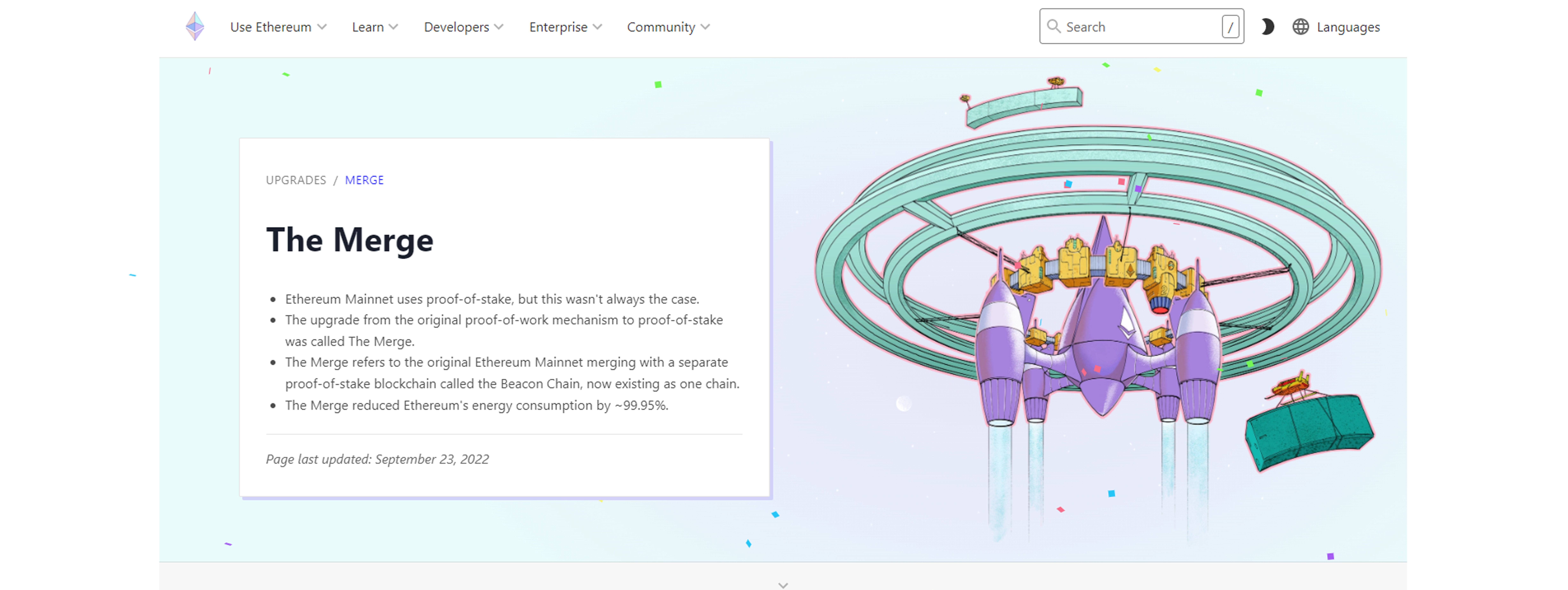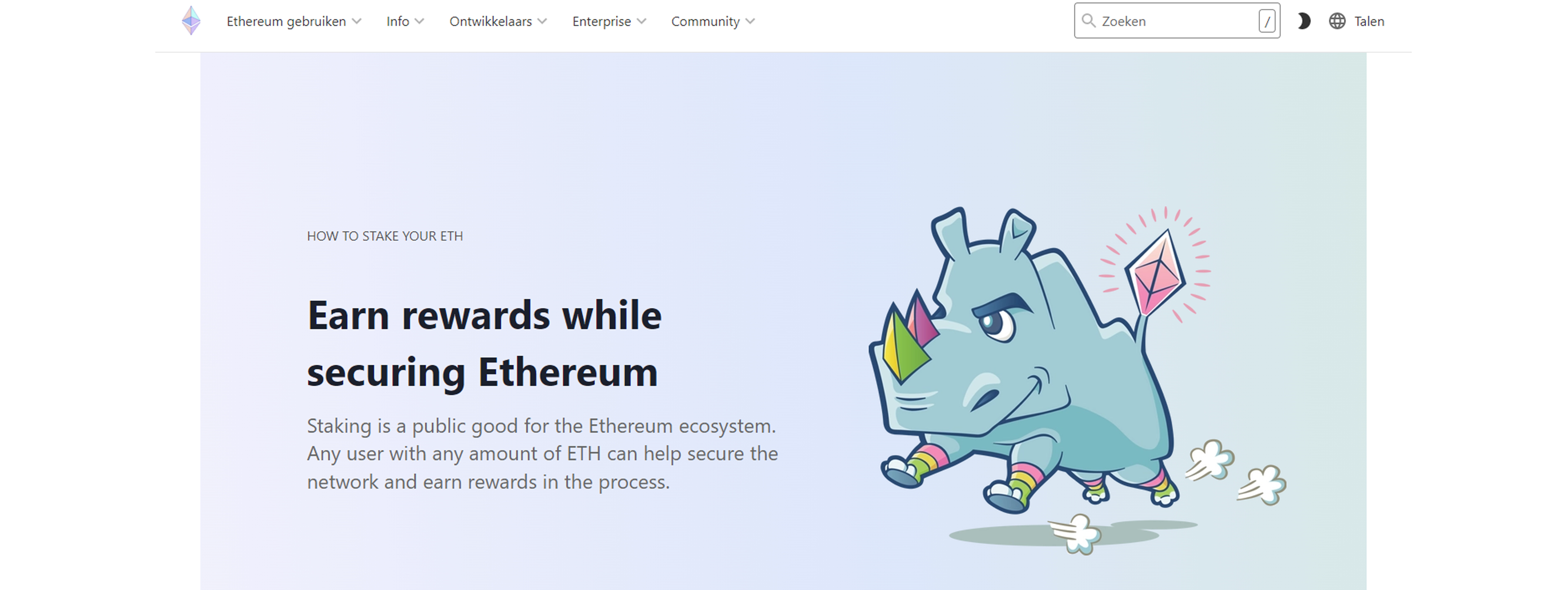So the Ethereum Merge is Done: What Happens Next?
Ethereum has been a significant force in the crypto industry since its launch in 2015. Today, around 3,000 decentralized applications reside on top of the Ethereum network, as per State of the Dapps.
One of the largest Ethereum updates, “The Merge”, recently took place.
Considered a historic event in the community, the Merge has the potential to change the shape of the entire crypto industry. Let’s discuss the details of the Ethereum Merge, and what subsequent changes may occur on the network moving forward.
Ethereum Merge Finalized

The long-awaited Ethereum Merge finally completed on September 15, 2022, at 6:42:42 UTC, when Ethereum’s PoW mainnet (the execution layer) merged with the Beacon Chain (consensus layer).
The Beacon Chain is part of a series of upgrades for Ethereum, and has been developing in parallel with the Ethereum blockchain since 2020.
The Merge marks the complete transition of Ethereum from a Proof-of-Work (PoW) to a Proof-of-Stake (PoS) consensus mechanism. Let’s review what changes we expect from Ethereum moving forward.
What Happens to Ethereum After the Merge
Staking on Ethereum
Earlier, Ethereum had a PoW system that involved ETH miners verifying transactions and publishing new blocks. Ethereum now utilizes a PoS system that involves validators who stake at least 32 ETH to active validator software. The network randomly selects the validators to verify transactions and create new blocks.

Investors have been able to stake their Ethereum since the Beacon Chain upgrade. However, after the Merge, the whole network depends on validators and involves staking at a large scale.
Validators must deposit 32 ETH and are responsible for storing data, processing new transactions, and adding new blocks to the network.
Apart from validators, investors can also stake Ethereum and earn rewards in exchange. Solo staking involves staking 32 ETH and a dedicated computer connected to the internet 24/7.
However, investors who do not want to deal with hardware can also stake 32 ETH by choosing the ‘Staking as a Service’ option. Several Pooled Staking solutions allow investors to stake less than 32 ETH.
Many of these options include what is known as 'liquid staking' which involves an ERC-20 liquidity token that represents your staked ETH. Additionally, many centralized crypto exchanges also provide Ethereum staking services.
Reduced Energy Consumption
The Merge marks the beginning of a new era in the Ethereum blockchain. In the last few years, the ecological impact of PoW mining has been a major concern for blockchain adoption.
By moving from the PoW to PoS system, Ethereum is projected to become a more sustainable and eco-friendly cryptocurrency.
According to the Ethereum Foundation, the energy consumption of Ethereum is expected to reduce substantially by 99.95%. Ethereum’s prior Proof-of-Work mechanism required a lot of computational power, which increased the overall energy consumption. However, this is not the case with Ethereum after the Merge.
As Ethereum becomes more eco-friendly, it may attract more institutions and investors who were previously reluctant regarding Ethereum due to its high energy consumption. Eliminating the climate concerns could also be a big change for other major blockchain applications, such as NFTs.
Ethereum turning green is an important transformation for the entire crypto community, because a majority of the crypto projects are built on Ethereum. Thus when Ethereum becomes more eco-friendly, it trickles down to all projects on the network.
Though there are other blockchains that continue to work on the PoW system, Ethereum’s transition can still bring a net-positive impact on energy consumption.
Transaction Speeds and Gas Fees
Ethereum has been going through a series of upgrades to become more scalable, sustainable, and secure. The Merge was mainly concerned with changing the underlying consensus mechanism and reducing energy consumption - it is not directly connected to any changes in transaction speeds and gas fees.
The Merge is not intended to reduce the transaction fees on Ethereum.
The transaction fees may decrease over a period, but we don’t expect it to happen immediately after the Merge. Future network updates such as ‘Sharding’ may help address the high gas fees of Ethereum, but we most likely won’t see those changes until 2023.
The transaction speeds of Ethereum may improve slightly after the Merge. Before the Merge, the transaction speeds are at around 13-14 seconds. After the Merge, they have reduced to nearly 12 seconds. This change in Ethereum transaction speeds is too slight to be noticed by the end-users.
As for updates moving forward, Ethereum users can expect upgrades over the next few years, often termed the Surge, Verge, Purge, and Splurge. By the end of its technical roadmap (Including all the roll-ups and Sharding), Ethereum’s transaction speed will improve significantly and will be able to process around 100,000 transactions per second.
Ethereum Merge Bottom line
Ethereum is on a long journey to become a more scalable, sustainable, and secure blockchain network. With the Merge, the immediate changes will be the transition of its consensus mechanism and the significant reduction in its energy consumption.
While the Merge doesn’t address every goal for Ethereum, it acts as a crucial step in implementing future Ethereum upgrades.

